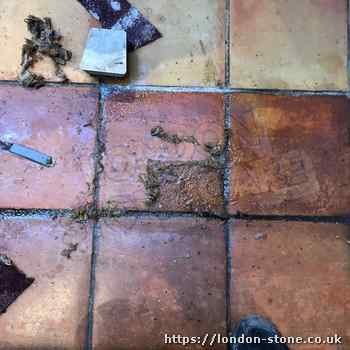
Terracotta Cleaning London
See The Number One Terracotta Cleaning London.
- You are in the most beneficial site if you should be trying to find Terracotta floor cleaning.
- Vast knowledge of cleaning Terracotta floor tiles cultivated over two decades.
- Our Terracotta cleaning industry experts are right here to greatly help and give you a cost to clean your Terracotta floor.
Cleaning Terracotta Tiles
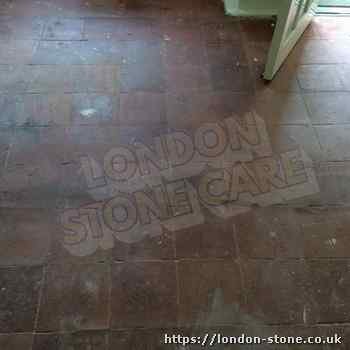
Cleaning Terracotta gets more difficult due to the fact that the floor gets older. Having the ability to work through basic Terracotta floor cleaning problem solving can be difficult. Eventually you will have to a certified Terracotta restoration business to get your Terracotta looking wonderful once more.
This road map can help you make an informed selection of a Terracotta restoration company.
Just how can we remove the sealer residues and impacted soil?
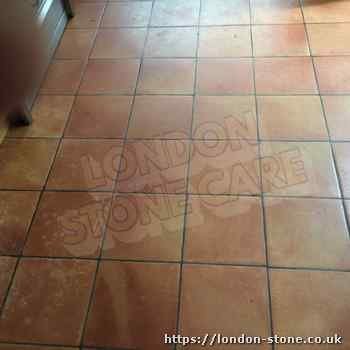
Terracotta is known as a fashionable flooring in houses and apartments. Yet, Terracotta needs regular maintenance to keep it appearing clean. Else, mopping is less effective.
Terracotta is often put down inside high wear kitchens and dining areas. Heavy utilization of terracotta floors causes an accumulation of grime and dirt.
Terracotta Floors suffer from more than one additional problems.
Dull patches as the original sealer has worn away or bgun to break up.

Terracotta is a soft material as well as porous. So a top quality Terracotta sealer is essential. In time lots of sealers have already been used, from linseed oil to modern impregnating and surface sealers. Each sealer has a particular mopping cleaning chemical to help look after the sealer. Many common floor cleaning products have chemical substances that break down and degrade sealers. Eventually, the sealer wears off, enabling mopping solutions to soak inside the Terracotta tiles.
Annoying surface scratches from heavy traffic or moving home furniture.
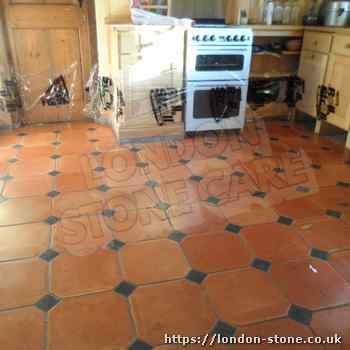
Sealers protect against standard foot wear and spillages. They do not stop heavy traffic deterioration and scratches. Only frequent terracotta mopping and sealing repairs the areas of damage, refurbishing the appearance. Yet, the floor must certanly be clean before sealing; olse, a sealer will trap the soil and the floor start to look Unpleasant.
Unattractive Sealer And Polish Deposits.
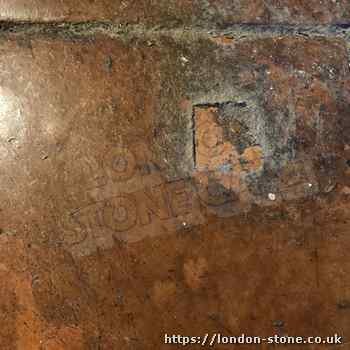
With no professional machines, it is hard for a resident to get rid of all the ingrained soil off a floor before sealing. Resealing can encapsulate the residual dirt, dust, dog hairs along with other detritus. When this carries on, the sealer starts to look dark colored and unattractive.
Old Sealers Peeling Off The Floor Tiles
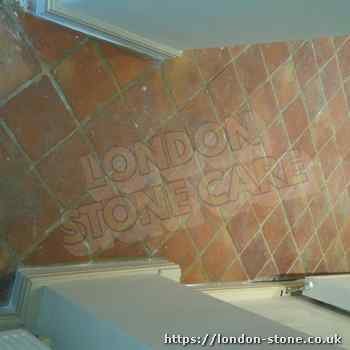
Peeling usually takes place in locations when the tiles are grubby or contaminated, and the sealer will not bond to the old sealer. Eventually, the finish peels off, making an unsightly patch.
Dark colored, Stained Grout

Terracotta usually has wide, dand grout. The grout is not laid flush with all the surface of the tiles. Dirt and other contaminants can quickly find a home within the many pores and ridges in the grout. Because grout is permeable, liquids, predominantly mop slurry, seeps into the grout and stains it.
Professional terracotta tile cleaning is the ideal answer to create your Terracotta bright and clean again. To make your floors appear just like new, contact us for a totally free Terracotta cleaning and restoration quotation.
Terracotta Sealing - Sealing Terracotta Floors
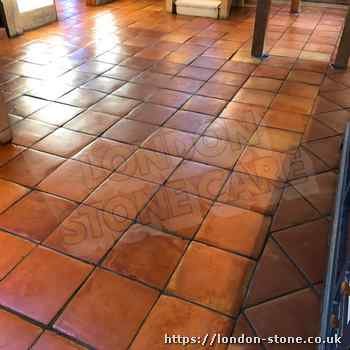
Kitchens, dining rooms and bathrooms have plenty of fatty and water spills that will stain Terracotta tiles. Spills can quickly penetrate the surface of the floor tiles, making unpleasant marks and spots. High-quality Terracotta can mark, and imported varieties can vary significantly in sbsorbancy. A sealer helps prevent a spill from staining the Terracotta.
Terracotta doesn't have glaze on the surface, so it will absorb spills and soil speedily. Coarse chemical substances like domestic bathroom and kitchen products can completely damage and mark a Terracotta sealer.
Cleaning terracotta tiles commences with the removal of the old polish, sealers and ingrained dirt with industrial-grade sealer removal treatments and terracotta cleaning treatments.
Whilst we can seal Terracotta with boiled linseed oil and wax, we advice a durable man-made sealer that will wear for years, with little maintenance, when compared to classic polishes.
Tradidional Approach To Sealing Terracotta
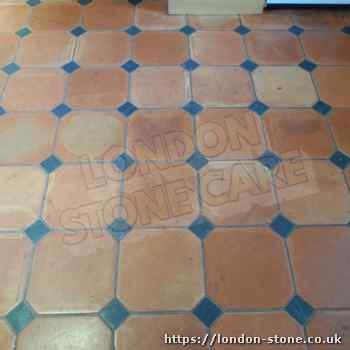
Boiled linseed oil was utilized to seal Terracotta before the development of modern-day sealers The Terracotta was re-coated every year to persevere the amount of sealer..
This process darkened the tiles together with the grout, going for a sheen or glossy appearance. If you like to keep this look, the floor may need one or two top-up layers of oil. Cloths loaded in oil are particularly combustible.
Hence professional technicians take appropriate measures during application. A floor wax can give added protection. A buffing machine can buff the wax finish to a light or high sheen finish.
Modern Approach To Sealing Terracotta
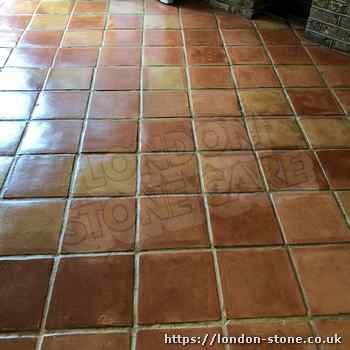
Modern sealers also provide the choice of an assortment of finishes; from matt, to sheen and gloss.
Modern sealers are never as hazardous to make use of.. modern-day
A matt finish is becoming more fashionable. If you like a matt, natural finish, put on an impregnating sealer.
Some Impregnating sealers will enhance the colours in Terracotta or others will provide a neutral finish.. However, Terracotta is very porous, so that you need to use several layers of sealer.
modern day acrylic sleaners are now supplied to use as an alternative to a wax finish. modern day sealers will deliver a mid-sheen or gloss finish..
Still, you ought to check the wear areas and top-up the sealer when needed.. Contemporary topical sealers need 3 to 6 applications to achieve a hard-wearing surface.
Acrylic sealers last as much as four years according to foot traffic. In most cases, just the wear areas need to be resealed..
If whole floor is worn, you need to strip and re-seal the floor. Recently, new sealers hafe become availabele, that give much more life.
In the last 30 years, Terracotta sealing technoology has developed a whole lot. your choices are on the market to truly have the appearance you want. What Happens If You Have Chipped, Cracked and Loose Tiles?
Terracotta Tile Restoration
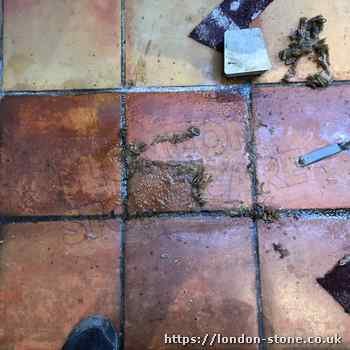
Cleaning and repairing Terracotta is called Terracotta restoration.
Terracotta Repair
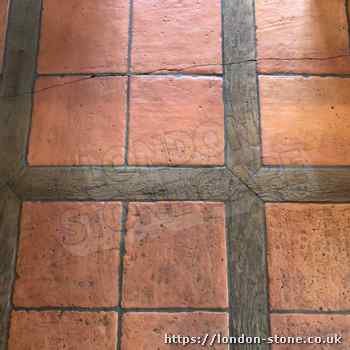
When there is a lot of movement in a floor base, it usually results in tiles cracking
You most frequently see cracks in doorways and between rooms. Also, a crack can appear as a result of a deficiency or weak point in the tile. Crack repaircosts not as much as replacing the tile. Hairline cracks in Terracotta can't accept a filler. Diamond burrs can open the crack to accept a filler.
The crack is by using a coloured grout. Sponge finishing is usually fine for sanded grout. It is hard to create a crack repair invisible.
However a dirty crack is ugly in comparison to a mend. Vintage Terracotta floors have sand and cement, or mortar grout. Sand and cement grout is quite porous and frequently gets stained. Should this happen, it is possible to swap or colour the grout. Grout colouring takes significantly less time than replacing the grout and costs significantly less.